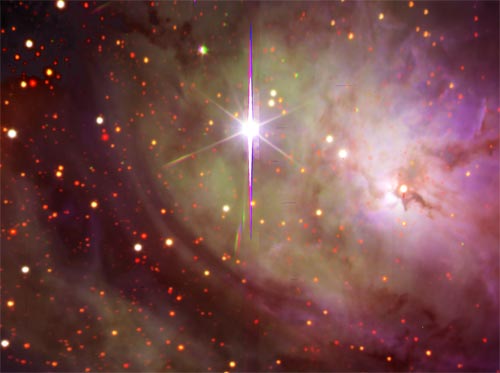Key Takeaways:
The South African Large Telescope (SALT) released its first images today. Five years after construction began, the scope made its first observations, termed “first light,” from its dark-sky perch at the edge of the Kalahari Desert in South Africa.
“The declaration of first light signifies SALT has arrived on the astronomical scene,” the South African Astronomical Observatory, SALT’s parent organization, expressed in a statement. The scope joins six others at the mountaintop site, but the megalith boasts a primary mirror array 32 by 36 feet (10 by 11 meters), making it the largest telescope in the Southern Hemisphere.
The images, taken with a digital camera called SALTICAM, include the Lagoon Nebula, globular cluster 47 Tucanae, and spiral galaxy NGC 6744. “The southern Milky Way is more spectacular and provides a richer treasure trove of objects than the northern Milky Way,” comments project member Eric Wilcots of the University of Wisconsin, Madison.
Studies are already planned to explore stars in the Large and Small Magellanic Clouds — the closest galaxies to the Milky Way, and best seen in the southern sky — to better understand galactic evolution. Other projects include ultraviolet observations of stars using the main scientific instrument, the Prime Focus Imaging Spectrograph (PFIS).
In addition to the telescope’s size and advanced technology, its location is a boon. Project member Theodore Williams, also of Rutgers, explains, “For the first time, astronomers can now have a detailed 24-hour view of the southern night sky by combining South African observations with similar images from telescopes in Australia and Chile.”
SALT is supported by 11 partners worldwide.












